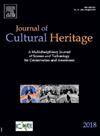早期铁器时代拟人吊坠的增材制造痕迹
IF 3.3
2区 综合性期刊
0 ARCHAEOLOGY
引用次数: 0
摘要
在卡拉布里亚的几个史前遗址中发现了描绘拟人夫妻的青铜吊坠,其历史可以追溯到公元前8世纪。考古发现的历史和文化背景与奥诺特里亚人有关,这是一个在希腊殖民之前定居在意大利南部的人口。我们介绍了两个可追溯到铁器时代早期的青铜吊坠的调查结果,属于两个不同的类别,即“A型”和“B型”。通过揭示它们的制造技术,我们旨在探究这些文物的起源,它们的用途和相关的历史时期。为了实现我们的目标,我们使用了两种非破坏性技术:用于内部结构3D可视化的x射线微断层扫描(x射线微CT)和用于青铜器化学成分分析的带有能量色散x射线分析的扫描电子显微镜(SEM-EDX)。两种人工制品之间出现了显著的差异;“A型”表现出“B型”所没有的明确的解剖细节。此外,3-D重建还揭示了有关生产技术和改造效果(如裂缝和空隙)的额外信息。有证据表明,这两个吊坠都是在模具中铸造的,但“A型”经过了额外的建模,形成了详细的解剖特征,一个功能性的项链孔,并增加了膝盖和手臂等元素。相比之下,“B型”以最小的后期铸造处理显示光滑的形式。SEM-EDX分析揭示了成分的显著差异:“A型”含铜比例较高,锡含量较低。相比之下,“B型”含有更多的锡和更少的铜,铅含量相似。本文章由计算机程序翻译,如有差异,请以英文原文为准。
Traces of additive manufacturing in early iron age anthropomorphic pendants
Bronze pendants depicting anthropomorphic couples, dating back to the 8th century BC, were found in several protohistoric sites in Calabria. The historical and cultural context of the archaeological finds is linked to the Oenotrians, a population that settled in Southern Italy before Greek colonization. We present the results of the investigation on two bronze pendants dating back to the early Iron Age belonging to two different classes, namely “Type A” and “Type B”. By unveiling their manufacturing technology, we aim to inquire about the origins of these artifacts, their uses, and the relative historical period. To achieve our goals, we utilized two non-destructive techniques: X-ray microtomography (X-ray µCT) for 3D visualization of internal structures, and scanning electron microscopy with energy-dispersive X-ray analysis (SEM-EDX) for the chemical composition analysis of the bronze objects. Notable differences emerge between the two artifacts; “Type A” displays well-defined anatomical details that are absent in “Type B”. Furthermore, 3-D reconstructions reveal additional information on production techniques and alteration effects, such as fractures and voids. Evidence suggests that both pendants were cast in molds, but “Type A” underwent additional modeling, resulting in detailed anatomical features, a functional necklet hole, and added elements like knees and arms. In contrast, “Type B” displays smooth forms with minimal post-casting processing. SEM-EDX analysis revealed notable differences in composition: “Type A” contains a higher proportion of copper and lower tin content. In contrast, “Type B” has significantly more tin and less copper, with similar lead content.
求助全文
通过发布文献求助,成功后即可免费获取论文全文。
去求助
来源期刊

Journal of Cultural Heritage
综合性期刊-材料科学:综合
CiteScore
6.80
自引率
9.70%
发文量
166
审稿时长
52 days
期刊介绍:
The Journal of Cultural Heritage publishes original papers which comprise previously unpublished data and present innovative methods concerning all aspects of science and technology of cultural heritage as well as interpretation and theoretical issues related to preservation.
 求助内容:
求助内容: 应助结果提醒方式:
应助结果提醒方式:


